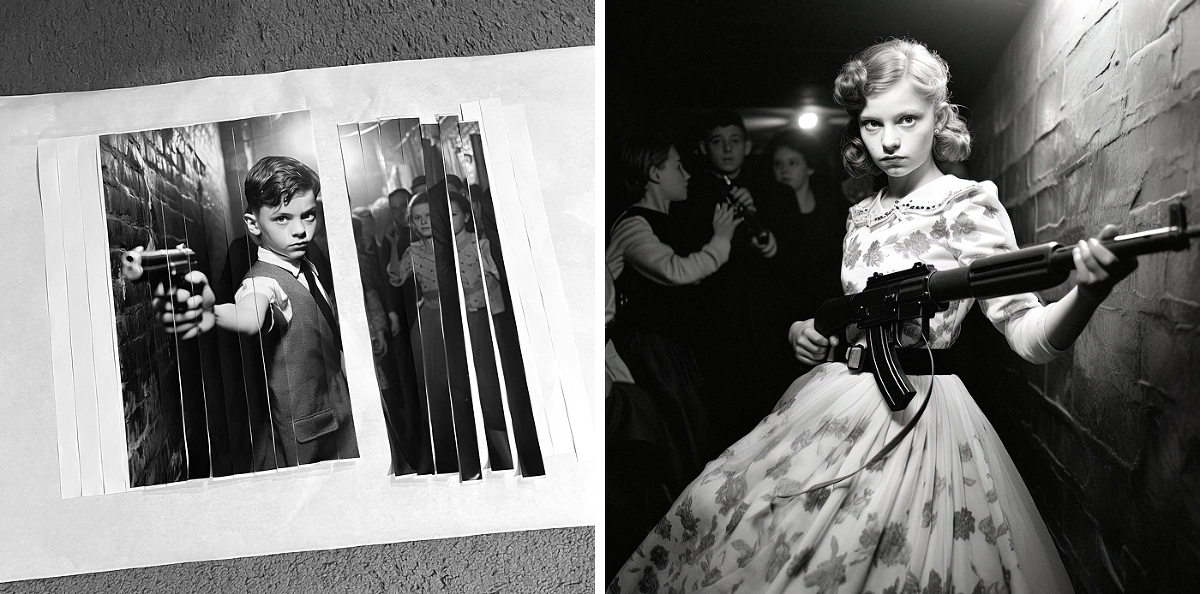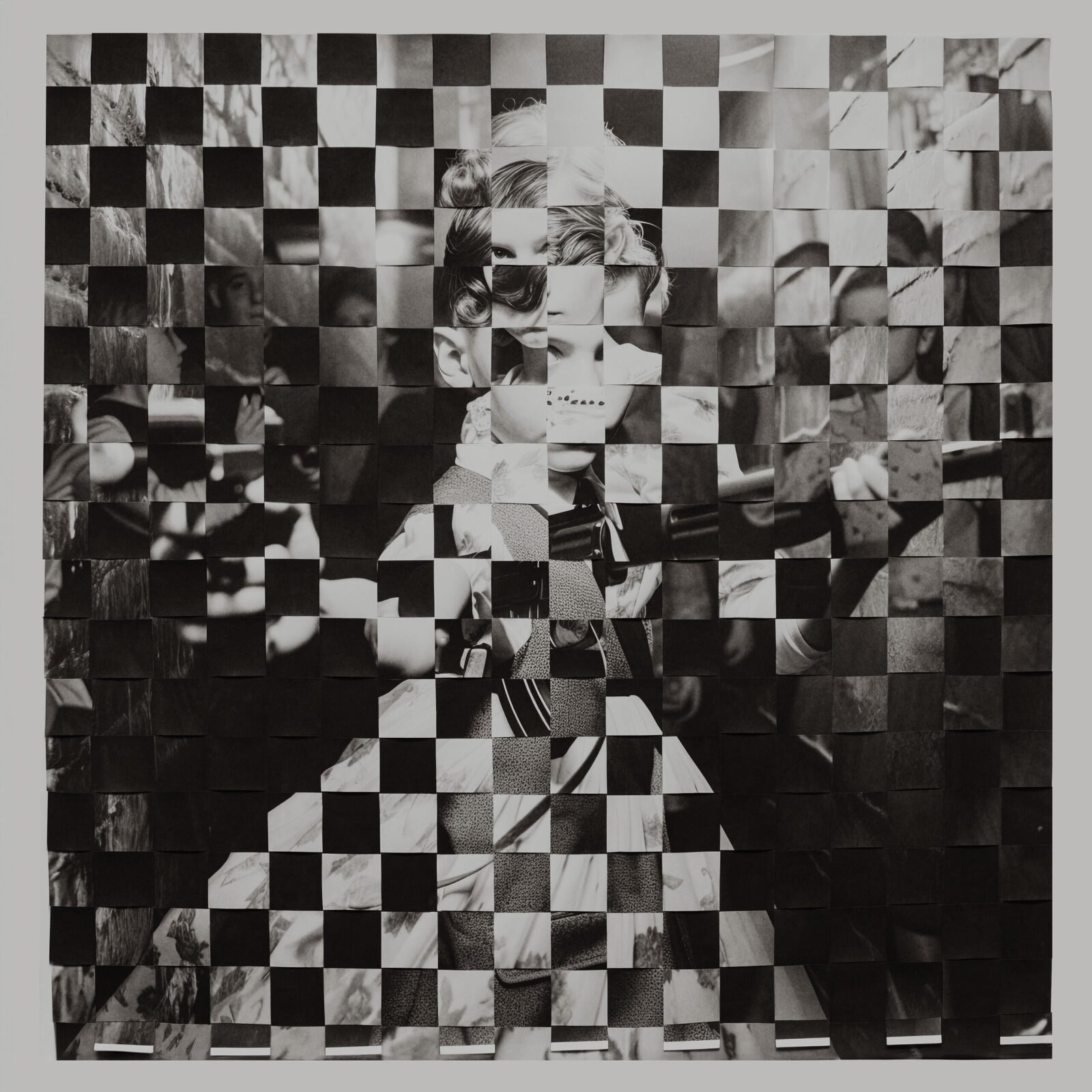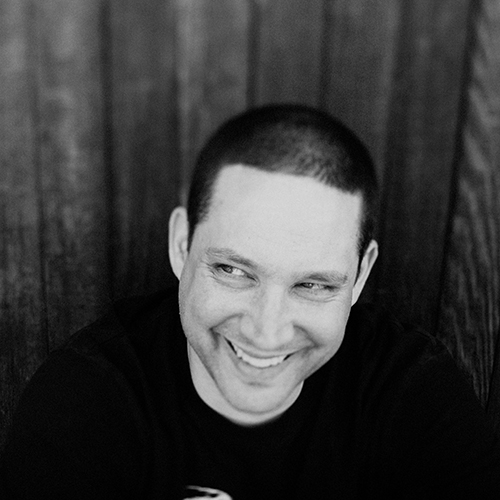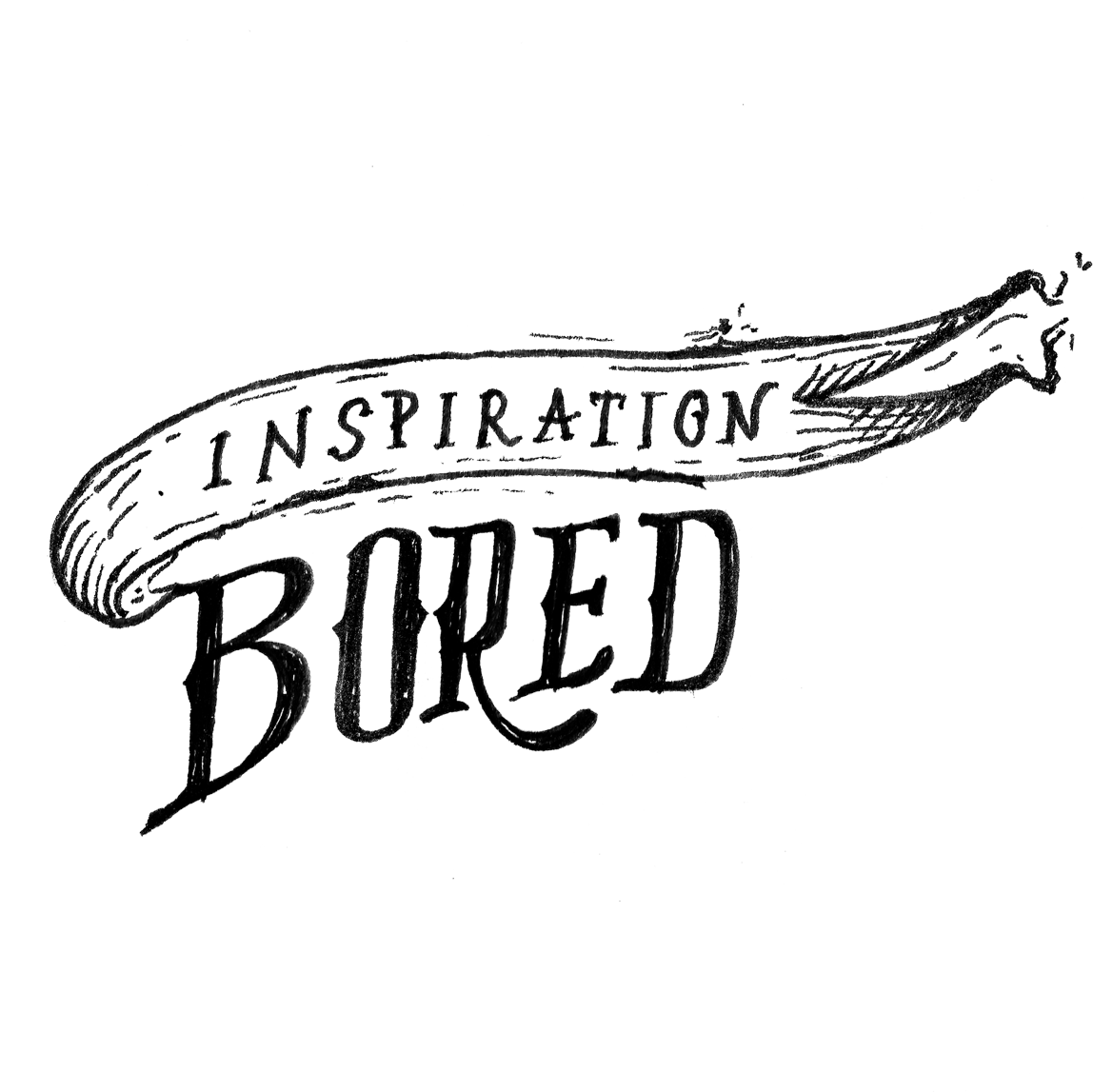.jpg)
There has been so much controversy lately in the photography community over AI image generators that I’ve been reluctant to share my experiences with them, or publicly showcase any work I’ve made using them. I especially don’t want to offend photographers who fear this technology not only takes advantage of unpaid artistic labor, but also acts as a plagiarism engine that could eventually replace us as artists. Although sensitive to these concerns, I would like to share a few thoughts on this new technology...
1: THROWING ROCKS AT THE INTERNET
It seems you can’t throw a rock at the internet these days without hitting an article discussing the potential apocalypse or utopia promised by recent advancements in artificial intelligence (AI). For image makers, AI is transforming how we approach our craft, revolutionizing editing processes while having the power to generate images that look like photographs without the use of a camera. In this post, I want to delve into the transformative capabilities of AI, the ethical dilemmas it poses, some of my personal experience with using AI, and the evolving role of photographers as witnesses. Additionally, I’m excited to share some of the work I’ve been making as a traditional photographer working with AI as a part of my toolkit.
2: REVOLUTIONIZING PHOTOGRAPHY WORKFLOW
Recent advancements in AI technology have completely revolutionized the backend of my wedding photography business. Now, I employ an AI tool that, through machine learning, has analyzed over 40,000 of my edited wedding photos. It accurately predicts my editing choices in Lightroom and applies edits within minutes. For instance, making a base edit on a wedding with over 900 photos now takes merely 10 minutes, a task that previously consumed hours or even days manually. I leverage AI for tasks like culling through unedited photos to identify standout shots, making intricate selections in Lightroom and Photoshop swiftly, and eliminating distractions from images with a simple keystroke. For over a decade, I’ve devoted myself to 10+ hour workdays to ensure timely delivery of finished wedding galleries. With AI’s assistance, I can now accomplish that work in less than half the time.
3: AI’S DISRUPTIVE POTENTIAL: IS PHOTOGRAPHY AT IT’S END?
On the other hand, AI image generators like Dall-E and Midjourney signify a profound transformation in the realm of image making. These programs, along with their counterparts, are often seen as heralding the demise of photography as we know it. With a simple text prompt, these programs can conjure up surprisingly realistic images that rival those captured by a camera. Consequently, many industries now find themselves questioning the need for traditional photoshoots. The roles of photographers, lighting and art directors, models, stylists, production assistants, and studio rental agencies are no longer necessary to create high quality photographic images. Sadly, for those who are strictly product or stock image photographers, the days of relying on one’s expertise with a camera are either over, or numbered.
As for wedding photographers, I don’t anticipate AI image generators will significantly disrupt our careers any time soon. One critical function these programs are unable to replicate is the act of bearing witness. As we enter this era characterized by the proliferation of artificial image generation, I believe witnessing through photography will become of central importance. This shift will redefine the primary focus of photographic practice, especially as AI image generators gradually replace other forms of photography. For the time being, genres like photojournalism, wedding, family, boudoir, and event photography will still hold relevance. Or, more precisely, the camera as a tool will still be needed for these activities.
4: ETHICAL CONSIDERATIONS
Another detail about these image generators that is troubling for some is that they were trained using photographs and artworks without the consent of the original creators, who also received no compensation for their use. Additionally, some artists argue that these machines are essentially plagiarizing their work and imitating their unique style, further complicating the ethical debate surrounding these technologies.
5: FIRST IMPRESSIONS
Against the pleas from numerous photographers urging artists to refrain from creating or sharing images produced by AI image generators, I began experimenting with Midjourney in the fall of last year. My initial reaction was the same excitement I felt when I discovered my first camera. Basically, a sense of wonder over the technology itself. With the camera, I couldn’t believe that I could essentially be carrying around a copy machine– that I could just point at something, press a button, and have an image of that thing forever. The technology was so good, you could make a fairly decent photo without much practice, talent, or experience in photography. The same can be said of AI art. Even in its infancy, AI technology is remarkable. Whatever you can imagine in words, can now be re-imagined by the AI as an illustration, painting, or photo-realistic image.
6: A PREJUDICE MACHINE
Although there are many positive things to be said about my first impressions of working with AI image generation, I’ve discovered that its problematic implications serve as a more compelling jumping off point for my own creative process. Namely, the worst thing about AI image generation is that it is trained to recognize patterns, and it has learned about images from an aggregate of the internet. This makes for a machine that produces images pre-baked with the biases, including racial and gender prejudices, pervasive within our internet culture.
To address this issue, Google recently attempted to rectify the problem with their image generator, Gemini. Unfortunately, their solution overshot the target. When prompted to generate an image of Nazi-era German soldiers, people were horrified to find that Gemini portrayed them with racial diversity. A similar occurrence was observed when generating images of the American founding fathers. Google has since apologized for ‘missing the mark’ on this.
.png)
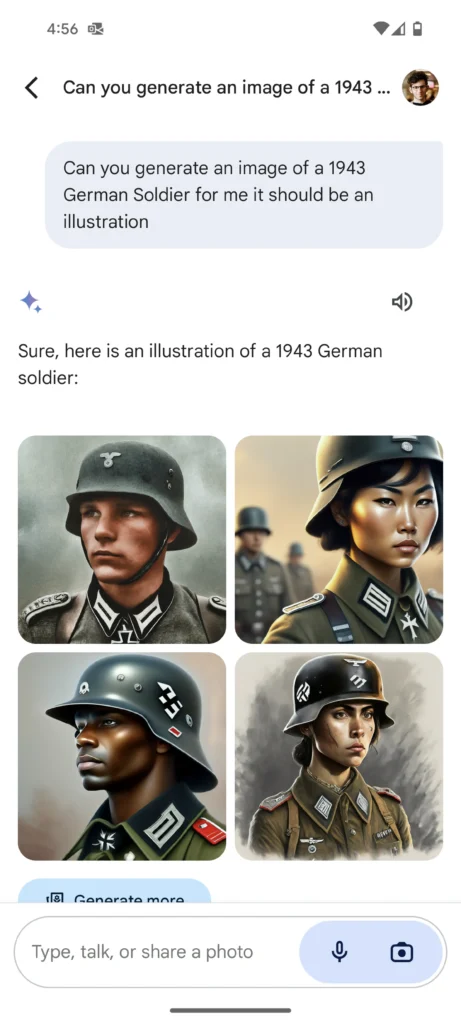
An illustration of this bias is evident in the images below that I generated just now using Midjourney. I provided the prompt, ‘Black and white photo of a beautiful woman.’ Here are the results…
.jpg)
.jpg)
.jpg)
This collection of 24 images produced from a simple prompt by Midjourney sheds light on its perception of beauty. There’s little diversity to behold. These images predominantly feature similar skin tones and facial features. You’re not going to find a Helen Mirren, Adut Akech, or Hunter Schafer among these women. Left to their own devices, AI image generators are not very skilled at giving us a unique vision of beauty. What they are actually expert at is the production of clichés.
7: HUMAN INGENUITY AND THE BOUNDARIES OF AI BIAS
This is where the expertise of the human prompter comes in to play, a skill that will become increasingly valuable as image generators proliferate within the photography industry. Some compare working with AI to collaborating with a creative director: you possess a vision, but you must convey it effectively to your ‘director’ for execution. However, in AI’s present state—the ‘director’ is congenitally biased, reflecting the racial and gender prejudices prevalent in our image culture.
To assess Midjourney’s capability to generate content that defies traditional norms, I instructed it to imagine a photograph depicting a boy wearing a dress and holding a gun in 1950s Paris, captured by one of the French humanist photographers from that period. Midjourney encountered immediate difficulty with this prompt. It consistently generated images featuring either a girl with a gun or a boy with a gun, but never a boy in a dress with a gun.
.jpg)
.jpg)
I attempted numerous versions of the prompt employing different phrases like ‘Boy wearing a dress,’ ‘Boy in a dress,’ and ‘Boy dressed like a girl.’ Additionally, I experimented with different photographers as points of reference, including Robert Doisneau, Jacques Henri Lartigue, and Henri Cartier-Bresson. Despite these efforts, the AI repeatedly failed to fulfill the task of imagining a boy in a dress.
As an experiment, I decided to strip away all other details from the prompt—no gun, no Paris, and no famous photographer as a reference. Just a boy wearing a dress. This approach yielded immediate results.
.png)
While Midjourney was capable of rendering an image of a boy dressed in girls’ clothing, it struggled with incorporating additional elements such as a pistol, a reference photographer, and 1950s Paris. Perhaps, this was just too many elements for the AI to mix together without a data set of images that correlate to it.
After some fine tuning, I eventually arrived at an image that was close to what I was looking for. Interestingly, a significant factor in this process was the specification that the boy’s head be shaved. Upon making this alteration, I consistently received images depicting boys or individuals with a boyish appearance in dresses. Perhaps this implies that within our image culture, a shaved head is more easily associated with signaling androgyny. This also illustrates how we could possibly use these image generators not only to create images, but also to better understand the biases and prejudices of our culture.
The image below was generated based on the following prompt, “Photograph by Henri Cartier – Bresson of a teenaged boy with a shaved head in a baby doll dress holding a gun on the sidewalk outside of a cafe in 1950’s Paris. He is smoking a cigarette and looking directly at the camera.”
.png)
Okay. So, weird hands. Weird gun. Weird text on the sign in the background. No cigarette. None the less, it got the boy into a dress and the image conveys the “feeling” of the french humanist photographers I’m interested in. While I could have continued refining the prompt to enhance the image, at this point I grew increasingly less interested in images of children with weapons, or trying to get the AI to put a boy in a dress. I became much more interested in the mistakes made by the AI throughout the process.
*** It’s important to mention here that my exploration with these prompts began last year, and since then, Midjourney has undergone considerable advancements, particularly in its proficiency at rendering hands and text. It’s quite possible that I would obtain substantially different outcomes using these same prompts in Midjourney’s present version.
8: REFRAMING AI GENERATED IMAGES THROUGH TRADITIONAL PHOTOGRAPHY
When starting to think about what photography could be in the age of AI, I realized that I needed, of course, to use my traditional camera to capture and document my experiments. I’m particularly interested in teasing out the space between traditional photography, it’s history, our image culture, and images generated using artificial intelligence. Thus, my initial step involved producing large prints of the AI-generated ‘mistakes’ encountered while attempting to depict a boy in a dress. These prints were then eventually captured using a camera, shifting the narrative back to photography. Instead of posting or presenting AI representations of a textual prompt, I’m creating photographic re-presentations of AI generated images.
.jpg)
I decided to pair each boy print with a girl print, envisioning a process where I would hand-weave them together to reconcile the depiction of girls in dresses with those of boys without. This technique involved cutting one print vertically and the other horizontally, then hand weaving the strips together to merge both prints into a single composition.
.jpg)
At first, I was disappointed by the weavings’ inability to reconcile the images as I had envisioned. They turned out to be much more abstract and inscrutable than I had anticipated. However, as I lived with them, I began to appreciate their inaccessibility. Additionally, I began to love the fact that despite being handmade with traditional analog scissors and paper, they look like pixelated digital corruptions glitching upon a computer screen.
.jpg)
.jpg)
.jpg)
.jpg)
.jpg)
After completing well over a dozen of these, I moved away from weavings, and decided to explore more traditional collaging techniques, allowing myself to experiment more freely.
.jpg)
.jpg)
.jpg)
Once these collages were completed and photographed, I imported the images into Photoshop and utilized the Generative Expand AI to enlarge the frames of the photos. Subsequently, I produced large duplicate prints of these expanded versions, cut them into strips, and proceeded to reassemble and re-photograph the images.
.jpg)
.jpg)
.jpg)
9: PHOTOGRAPHY AND IMAGE CULTURE
There’s been much discussion about how generative AI will spell the end of photography, rendering photographers obsolete. However, I believe the reality is that photography itself isn’t disappearing anytime soon. Instead, the widespread adoption of AI-generated images will fundamentally alter how people perceive and interact with photographs.
Throughout history, photography has been intertwined with the illusion of truth. The notion that ‘it didn’t happen unless you took a picture of it’ has persisted, despite being fundamentally flawed. This belief in the photograph as evidence has endured throughout the medium’s evolution. Whether it’s canon balls used as props in one of the earliest photographic images of warfare, or a corpse being moved for dramatic effect to stage one of the most famous photographs from the American civil war, or two young girls with an interest in photography convincing the world with evidence that fairies exist, traditional photography has consistently proved to be not only an unreliable narrator, but an untrustable one.
I hope that the proliferation of AI-generated images will prompt traditional photography to undergo the scrutiny it has long evaded. While some suggest that these images will usher us into a post-truth world, I see them as emphasizing photography’s historical struggle with truth and objectivity in the first place. Instead of treating photographs as irrefutable evidence, we should have always viewed them as akin to eyewitness testimonies. Just as witnesses undergo examination and cross-examination to ascertain their credibility, we should critically analyze the images saturating our culture and continually interrogate their origins and their meanings. It has always been a mistake to accept a photograph at face value.
10: THE PHOTOGRAPHER AS WITNESS
As we navigate the ever-shifting landscape of photography in the age of AI, one thing becomes abundantly clear: the role of the photographer as a witness is more crucial than ever. While artificial intelligence may excel at mimicking the outward appearance of photographs, they do not possess the ability, at least not yet, to observe the world like human artists. This underscores the critical role of photographers as witnesses. I believe photographers who can develop a distinctive voice while remaining trustworthy witnesses will be indispensable to our image culture as we move forward into the age of AI. In the meantime, I am excited to continue exploring and experimenting with these tools, and I am eager to share my thoughts and creations as they continue to evolve.
Article & Photography by Jonas Seaman.

